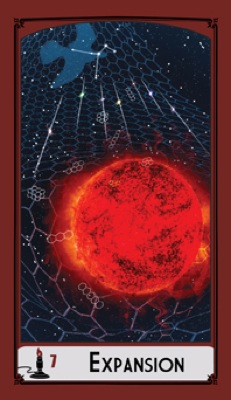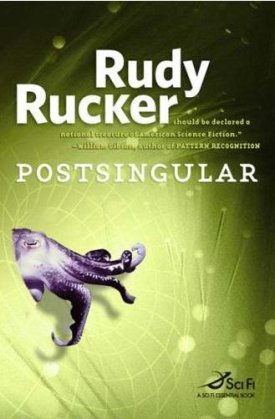The Latest from Boing Boing |  |
- Semi-functional homebrew Kenyan junk-plane
- BoomCases: self-powered amps built into old suitcases
- The Singularity won't be heaven: Annalee Newitz
- Kid-made Stormtrooper Hallowe'en costume, 1977
- Karen Joy Fowler, Claude Lalumière, F Paul Wilson, Cherie Priest and Dan Wells in San Francisco, Oct 16
- Manly 1922 recipes: The Stag Cookbook, food from Harry Houdini, Rube Goldberg, and others
- HOWTO make a HTML5 webcam photo-booth
- Webcam spying school settles with students, pays $1.2M in fees and damages
- HOWTO make a spherical multitouch interactive globe
- PIRACY: Jesus Did It
- Curiosity/taxidermy exhibition in London
- BodyMedia FIT Armband
- Science Tarot Cards
- Enola Gay co-pilot's sculpture of mushroom cloud
- Blabworld art book release and signing in Chicago, Friday, October 15, 2010
- Robotic privacy curtain moves across window to block snoops
- TED releases iPad app today
- Earthquakes? In Oklahoma? It's more likely than you think.
- Ex-Apple CEO Sculley: "It was a big mistake that I was ever hired as CEO"
- Visual aid for the deep mine rescue in Chile
- Mr. T: Gold Salesman. Supposedly Legitimate Financial TV Network.
- What does procrastination tell us about ourselves?
- Trainyard, and where it came from
- Too Much Darkness?
- Trailer for Mark of the Beast movie
- Norway's grassy roofs
- 4-year-old plays 'What a Wonderful World" on ukulele
- Michael J. Fox recreates the Back to the Future teaser trailer shot-for-shot
- Will eating a half a stick of butter a day make you smarter?
- Video: Mystery creature lurking on ocean floor near Tokyo
| Semi-functional homebrew Kenyan junk-plane Posted: 14 Oct 2010 11:54 PM PDT Gabriel Nderitu is a Kenyan IT worker who devotes his off-hours to attempts to build an airworthy airplane out of junk. Here's his latest attempt: a small plane (with detachable wings), powered by a Toyota engine. The strutted wing and ailerons are skinned with aluminum sheet. The engine itself turns up to 4,000 rpm, driving a 74-inch wooden propeller through a simple reduction belt drive. Nderitu says "a bit of it was a bit of reinventing the wheel ... not really looking and trying to copy." The aircraft is not yet finished and there is no guarantee Nderitu's craft will ever be licensed, or allowed to fly, or that it is even capable of flight (which seems unlikely). But that may not be the point.Gabriel Nderitu, Kenyan Homebuilt Aircraft Manufacturer (via Neatorama) | |||
| BoomCases: self-powered amps built into old suitcases Posted: 14 Oct 2010 11:50 PM PDT  Mr Simo's BoomCases are self-powered amplification systems built into vintage suitcases and briefcases. They run for seven hours on a single charge, and come with a built-in charging plug. Cost is $275 and up, which is steep, but here's a way to be stylish and audiophilic in one go, and they're hand-made by a skilled craftsman besides. The BoomCase by Mr. Simo (via MeFi) | |||
| The Singularity won't be heaven: Annalee Newitz Posted: 14 Oct 2010 11:44 PM PDT IO9's Annalee Newitz takes aim at the idea of the Singularity in an essay called "Why the Singularity isn't going to happen." Newitz's objection to the idea that technology will allow us to transcend human limitation and misery boils down to this: the vision of technological utopia is insufficiently weird. It is a "[vision] of tomorrow [based on] on fantasies from the past rather than what we can glean from factual accounts of history." It assumes that technology will solve problems but doesn't consider what new problems will emerge. I think that this may be true of people who embrace the Singularity as a scientific prediction or even as a social project, but I don't think it's particularly true of literature about the Singularity. Novels like Vernor Vinge's Rainbows End, Rudy Rucker's Postsingular and Karl Schroeder's Sun of Suns, are all about this idea of problems lurking inside the solutions. Charlie Stross and I have written two novellas, "Jury Service" and "Appeals Court," that are also about this notion (we're writing a third one now, "Parole Board," and Tor's going to publish all three as a novel called Rapture of the Nerds). Indeed, it seems to me that in literature, the Singularity's role is to serve as a straw-man for critiquing technology as a one-sided panacea (see, for example, my interview with Ray Kurzweil on the Singularity as a literary device, a spiritual belief system, and a technological prediction). But Newitz's critique of insufficiently weird technological prediction is spot on. She's identified a common flaw in futuristic prediction: assuming that technology will go far enough to benefit us, and then stop before it disrupts us. For a prime example from recent history, see the record industry's correct belief that technology would advance to the point where we could have optical disc readers in every room, encouraging us to buy all our music again on CD; but their failure to understand that technology would continue to advance to the point where we could rip all those CDs and share the music on them using the Internet. Why the Singularity isn't going to happen | |||
| Kid-made Stormtrooper Hallowe'en costume, 1977 Posted: 14 Oct 2010 11:27 PM PDT  Redditor Geekamongus shares this delightful homemade Stormtrooper costume from 1977, the year of Star Wars's debut. Halloween, 1977. I made my own stormtrooper costume. None have been made better since. | |||
| Posted: 14 Oct 2010 11:25 PM PDT Rina Weisman from the wonderful SF in SF (science fiction in San Francisco) reading series sez, There's also signings earlier in the day at Borderlands Books from F Paul Wilson, Dan Wells, and Cherie Priest. SF in SF presents Karen Joy Fowler & Claude Lalumiere Oct 16 (Thanks, Rina!) | |||
| Manly 1922 recipes: The Stag Cookbook, food from Harry Houdini, Rube Goldberg, and others Posted: 14 Oct 2010 11:20 PM PDT  Meg sez, "I was poking around at public domain cookbooks on Google Books and came across this excellent one from 1922, "The Stag Cook Book: Written for Men by Men." Featuring recipes from diplomats, actors and scientists, it answers awesome questions like "How did Harold Lloyd make lemon layer cake?"" Meg sez, "I was poking around at public domain cookbooks on Google Books and came across this excellent one from 1922, "The Stag Cook Book: Written for Men by Men." Featuring recipes from diplomats, actors and scientists, it answers awesome questions like "How did Harold Lloyd make lemon layer cake?"" The Stag Cook Book: Written For Men By Men (Amazon) The Stag Cook Book: Written For Men By Men (Google Book Search) (Thanks, Meg!) | |||
| HOWTO make a HTML5 webcam photo-booth Posted: 14 Oct 2010 11:11 PM PDT Nicko from Sunlight Labs sez, "Sunlight Labs recently held an open house to bring members of the technology and transparency communities together over videogames and beer. Our systems administrator, Tim Ball, volunteered to create a photo booth for the event. A few days before the event Tim destroyed his arm in a terrible, unfortunate accident, nearly dashing our hopes for a photo booth. We had to honor Tim's memory (he's still alive) so rather than using an off-the-shelf photo booth software package, we hacked it up from scratch using Python, CSS3, WebSockets, and an iMac. The result was a simple UI, a quick upload to our Flickr account and an easy way to share on screens at the party using an Apple TV." Sunlight's (Mostly) Web-based Photo Booth (Thanks, Nicko!) | |||
| Webcam spying school settles with students, pays $1.2M in fees and damages Posted: 14 Oct 2010 11:07 PM PDT  Jon sez, "Back in February Lower Merion School District found themselves in a world of uncomfortableness when they got outed for remotely spying on their own students. [ed: Not just remotely spying; the district mandated that students had to use school-issued laptops running secret spyware that covertly activated the webcam to take thousands of still photos of students and their families on and off campus (including sleeping and undressed students). The spyware was designed to run without displaying any sign that the camera had been activated.] Now they've settled. Two of the student's got a payout - one to the tune of $175k. But the real winner, of course, are the lawyers who're walking away with more than three quarters of the settlement. Also, it seems the only reason the School District decided to settle now was that their insurer came to the party and cover the school's legal fees - otherwise they'd still be slugging it out in court. Way to go, District." Jon sez, "Back in February Lower Merion School District found themselves in a world of uncomfortableness when they got outed for remotely spying on their own students. [ed: Not just remotely spying; the district mandated that students had to use school-issued laptops running secret spyware that covertly activated the webcam to take thousands of still photos of students and their families on and off campus (including sleeping and undressed students). The spyware was designed to run without displaying any sign that the camera had been activated.] Now they've settled. Two of the student's got a payout - one to the tune of $175k. But the real winner, of course, are the lawyers who're walking away with more than three quarters of the settlement. Also, it seems the only reason the School District decided to settle now was that their insurer came to the party and cover the school's legal fees - otherwise they'd still be slugging it out in court. Way to go, District." On the plus side, the District has abandoned its use of spyware. "A major impetus behind settling this matter now is the recent agreement by our insurance carrier, Graphic Arts, to cover more than $1.2M of the fees and costs associated with this litigation to date," Lower Merion School Board President David Ebby said in a statement.School District Settles Webcam Spying Litigation
| |||
| HOWTO make a spherical multitouch interactive globe Posted: 14 Oct 2010 10:59 PM PDT Aviso sez, "This is a cool way to stream live data and interact with a tangible Earth. Make your own Multi-Touch Spherical Display to connect with, learn about and care for Earth." DIY Spherical Display Plans (Thanks, Aviso, via Submitterator) | |||
| Posted: 14 Oct 2010 05:04 PM PDT  Link to larger size, creator and origin date unknown. Via Waxy, who adds: Shortly after, the BFA (Bread & Fish Association) filed lawsuits against all 5,000 food-sharers.To which I'd add:
| |||
| Curiosity/taxidermy exhibition in London Posted: 14 Oct 2010 04:04 PM PDT  Morbid Anatomy's Joanna Ebenstein reports from London where she visited The Museum of Everything's "Exhibition #3," "a carnivalesque spree exploring all things collectory, side-show, circus, grotto, and taxidermological." The show includes a restaging of Victorian taxidermist Walter Potter's famously strange wunderkammer, the contents of which are now owned by the likes of Damien Hirst and Sir Peter Blake. The Guardian also covered the exhibit with more history of Potter's collection. "Morbid Anatomy on The Museum of Everything, Exhibition # 3 (Morbid Anatomy) Genius or grotesquery? The arrestingly strange world of Walter Potter (The Guardian) | |||
| Posted: 14 Oct 2010 04:05 PM PDT  I've been using the BodyMedia FIT armband for the past 3 months and it is the only diet and exercise system that I've found that really works. The system works through the use of an armband that you wear on your left arm throughout the day. As you go about your regular routine the armband measures your caloric burn. The armband uses four sensors to track several variables from heat to sweat to steps to calories burned every minute of every day. You can track your daily burn and steps taken through an optional display, but the real power is in syncing the armband to the BodyMedia web site which allows you to see charts of calories burned per minute, steps taken, exercise levels, sleep cycles, etc. You can also track your weight measurements in the tool. The great thing about the online tools is that it lets you enter your daily caloric intake (just search for a food and add it to a meal), and compares your incoming calories to outgoing calories. By entering your calories on a daily basis you can ensure a realistic caloric deficit which is guaranteed to help you loose weight safely. It's very helpful for making sure you don't starve yourself by eating too little, or conversely, that you don't go crazy and eat too much. Since I started using the armband I've dropped 20 pounds that I've managed to keep off with almost no trouble. It's become pretty simple for me. I can eat a healthy but normal breakfast and lunch, then I check my calorie burn before dinner and make sure to eat the appropriate amount to ensure I maintain my target calorie deficit. What I love about this tool is that it eliminates estimation. Everyone has different basal metabolic rates depending on what they do during the day. Whereas most diet systems target a fixed number of daily calories, those fixed amounts could mean anywhere from a 500-2500 calorie deficit depending on the person. Anyone who's dieted knows that when you get into high calorie deficits you're body stops losing and you go into the so called starvation mode where your body actually holds onto the weight. With this that never happens. If I have a lazy day at work and am on target to burn 3200 calories then I know I can eat 2200 and maintain my 1000 calorie deficit. But say, I go for a long run on the weekend and do some yard work I could get up to 5500 calories burned. If I stuck with a 2200 calorie diet, my body (and my willpower) would rebel. However with BodyMedia, I know that on those 5500 calorie days I can eat 2000 more calories and still be on target for weight loss. Long story short - I absolutely love this system. -- Marc Ryan [Note: There is an even more thorough review of the system over at Ars Technica.-- OH] BodyMedia Fit System $220 includes 12 month subscription to the BodyMedia site Available from Costco Comment on this at Cool Tools. Or, submit a tool! I've been using the BodyMedia FIT armband for the past 3 months and it is the only diet and exercise system that I've found that really works. The system works through the use of an armband that you wear on your left arm throughout the day. As you go about your regular routine the armband measures your caloric burn. The armband uses four sensors to track several variables from heat to sweat to steps to calories burned every minute of every day. You can track your daily burn and steps taken through an optional display, but the real power is in syncing the armband to the BodyMedia web site which allows you to see charts of calories burned per minute, steps taken, exercise levels, sleep cycles, etc. You can also track your weight measurements in the tool. The great thing about the online tools is that it lets you enter your daily caloric intake (just search for a food and add it to a meal), and compares your incoming calories to outgoing calories. By entering your calories on a daily basis you can ensure a realistic caloric deficit which is guaranteed to help you loose weight safely. It's very helpful for making sure you don't starve yourself by eating too little, or conversely, that you don't go crazy and eat too much. Since I started using the armband I've dropped 20 pounds that I've managed to keep off with almost no trouble. It's become pretty simple for me. I can eat a healthy but normal breakfast and lunch, then I check my calorie burn before dinner and make sure to eat the appropriate amount to ensure I maintain my target calorie deficit. What I love about this tool is that it eliminates estimation. Everyone has different basal metabolic rates depending on what they do during the day. Whereas most diet systems target a fixed number of daily calories, those fixed amounts could mean anywhere from a 500-2500 calorie deficit depending on the person. Anyone who's dieted knows that when you get into high calorie deficits you're body stops losing and you go into the so called starvation mode where your body actually holds onto the weight. With this that never happens. If I have a lazy day at work and am on target to burn 3200 calories then I know I can eat 2200 and maintain my 1000 calorie deficit. But say, I go for a long run on the weekend and do some yard work I could get up to 5500 calories burned. If I stuck with a 2200 calorie diet, my body (and my willpower) would rebel. However with BodyMedia, I know that on those 5500 calorie days I can eat 2000 more calories and still be on target for weight loss. Long story short - I absolutely love this system. -- Marc Ryan [Note: There is an even more thorough review of the system over at Ars Technica.-- OH] BodyMedia Fit System $220 includes 12 month subscription to the BodyMedia site Available from Costco Comment on this at Cool Tools. Or, submit a tool! | |||
| Posted: 14 Oct 2010 03:55 PM PDT   This one's sure to ruffle a few feathers: Science Tarot aims to use the magickal mystery deck as a platform for illuminating real scientific concepts. The face cards profile different scientists and link them to specific neurotransmitters. According to the site, "Science Tarot is a group project, an exciting collaboration of professional talent including post-doc scientists, experienced tarot readers, graphic designers and published artists. We are united by our desire to explore and create at the intersection of science and art." From the description of the 7 of Wands - Expansion (seen above left): The red giant is at a great, expansive stage of the star's life and has grown to thousands of times its original size. Inner creation defines this moment in your life story as well.Science Tarot Cards (Thanks, Chris Arkenberg!)
| |||
| Enola Gay co-pilot's sculpture of mushroom cloud Posted: 14 Oct 2010 03:03 PM PDT Conelrad is running Bill Geerhart's fantastic and utterly bizarre article about a mushroom cloud sculpture made by Robert Lewis -- the co-pilot of the plane that dropped the a-bomb on Hiroshima. (Lewis named his work "God's Wind," but I think he should have called it "This is Not a Phallus.") Decades ago, Dieter Rosellen dubbed an unusual piece of art acquired by his best friend as "The 'Shroom." He still refers to the white Italian marble mushroom cloud sculpture by that nickname.The artist's more formal (and thought provoking) title for the work is etched into its base: 'God's Wind' at Hiroshima? The sculptor, Robert Lewis—the co-pilot of the Enola Gay, the plane that dropped the first atomic bomb in warfare—died in 1983 and Rosellen's pal, author and psychologist Glenn Van Warrebey, passed away twenty-one years later. The 'Shroom survives both of them.Bill Geerhart on The 'Shroom, a sculpture by Robert Lewis, co-pilot of the Enola Gay
| |||
| Blabworld art book release and signing in Chicago, Friday, October 15, 2010 Posted: 14 Oct 2010 01:55 PM PDT  My friend Monte Beauchamp is holding a booksigning in Chicago tomorrow for the Blabworld art anthology.
BLABWORLD Release and Signing | Buy BLABWORLD Number 1 on Amazon | |||
| Robotic privacy curtain moves across window to block snoops Posted: 14 Oct 2010 01:32 PM PDT John Park of MAKE says: "Niklas Roy cannot be contained! He's built a curtain in his shop window that uses machine vision and fast linear positioning to block the view of nosy onlookers." My workshop is located in an old storefront with a big window facing towards the street. In an attempt to create more privacy inside, I've decided to install a small but smart curtain in that window. The curtain is smaller than the window, but an additional surveillance camera and an old laptop provide it with intelligence: The computer sees the pedestrians and locates them. With a motor attached, it positions the curtain exactly where the pedestrians are.My little piece of privacy | |||
| Posted: 14 Oct 2010 01:17 PM PDT  The wonderful videos of the speakers who present at TED conferences around the world can now be enjoyed on this free iPad app. Riveting talks by remarkable people, free to the world.Introducing the TED iPad App | |||
| Earthquakes? In Oklahoma? It's more likely than you think. Posted: 14 Oct 2010 12:25 PM PDT  This is a picture of Meers Fault in southwestern Oklahoma—the only place in the state where tell-tale signs of earthquakes are visible above ground. But, beneath the surface, the Sooner State is riddled with faults—far more than anyone could count, says Andrew Holland, seismologist for the Oklahoma Geological Survey. Those faults are behind the moderately sized earthquake that struck near Norman, Oklahoma, yesterday morning—somewhere between 4.3 and 4.7 on the Richter scale. Thirty miles North, in Oklahoma City, it rattled my Dad's windows and scared the crap out of his cats. I always knew earthquakes were possible in the lower Midwest, raised, as I was, on tales of the massive one that shook New Madrid, Missouri, in 1812. But I didn't realize that Oklahoma—and Kansas, and Arkansas—also had active faults. In fact, 2010 has been a banner year for Oklahoma earthquakes. More than 80 have been recorded, and more than 50 of those were felt by people—far above the state average. I called Holland to find out why there's so much shakin' going on, whether this has anything to do with the infamous New Madrid fault, and how you get a fault in the middle of a tectonic plate, to begin with.
Maggie Koerth-Baker: I think most of us are used to the idea of faults being found at the edges of tectonic plates, but Oklahoma is right in the middle of the North American Plate. Why would you find faults there? Andrew Holland: Oklahoma has been pulled apart and stretched over previous cycles of plate tectonics. There are spots where the North American Plate has been pulled apart and where old plates fused together. The fault lines still exist in the subsurface. They're buried. But they're under a lot of pressure. You get transferring pressures from the plate boundaries at the Mid-Atlantic Ridge and the Pacific and San Juan plates on the other side. There's these pressures from the edges that get transmitted through the solid rock.MKB: How are these faults different from what you'd find in, say, California? AH: The rocks here are older and less deformed on the edges. They're stronger than they are in California, where things are actively deforming. So, here in central U.S., the energy from an earthquake gets radiated much further than in California, because the rock the seismic waves travel through is more solid. It's just like how sound carries faster and louder through metal, than through wood or Styrofoam. MKB: If these faults are buried in solid rock, how do they move? I can easily picture how a fault at the edge of a tectonic plate builds up and releases energy, but how does that work in Oklahoma? AH: The sense of motion on our faults in Oklahoma is actually very similar to the motion in the San Andreas. Imagine two bricks sliding past one another. It's harder to imagine, even for me, how you have this slip at depth. But it's basically two rocks sliding past one another. MKB: The recent earthquakes in Oklahoma aren't being caused by the New Madrid fault, correct? Are they similar faults, though? AH: It is correct that these earthquakes are occurring on faults unrelated to the New Madrid fault. It's a different fault, but similar in style. There's a bigger demonstrated hazard on the New Madrid fault, but we do have possibility of having a larger earthquake in Oklahoma. There's one fault here that's actually visible from Google Earth, the Meers fault. We can look at the geologic record and see that it was active about 1300 years ago, with a couple episodes equivalent to magnitude 6.5. MKB: How common are earthquakes in the lower Midwest? It seems like we're always shocked when they happen, but Oklahoma actually has some almost every year, right? AH: It's more common than people think. In Kansas, my wife's parents carried earthquake insurance on their house in Junction City their whole lives. Arkansas is having earthquake swarms right now, too. It's funny, I go around and older people remember feeling the 1952 'quake. That's the largest we've instrumentally recorded in Oklahoma—somewhere between 5.2 and 5.9. I think people are surprised, though, because it's less common than in California. People have short memories and we have tornadoes every year, so those stand out more. MKB: This year, and 2009, have been peak years for earthquakes in Oklahoma. Do we know why that increase suddenly happened? Is this weird? AH: This year is a statistical anomaly. But we've got catalogs all the way back to 1897 and there's basically been earthquakes in all but three counties in Oklahoma. We don't know for certain what triggers peak years. Could just be random chance, the statistics playing out. One thing, that's somewhat applicable here ... if you look at the North Anatolian Fault in Turkey, what they can show is that each rupture adds stress to another section of the fault, which then ruptures, and it just unzips as it goes along. The same thing can happen here. But there's no direct timing. It can be years before the next section goes ahead and ruptures. Anywhere between 10 and 20 years between sections on the Anatolian fault. MKB: There's a lot of drilling for oil and gas that goes on in Oklahoma, and I've seen some speculation that this activity could be triggering earthquakes and leading to the recent increase in events. Is that possible? AH: So, that's something I'm actively examining. The research is still in its infancy. I just started here in January. At this point, we don't see any indication that that's the case. But I'm examining it as a real possibility. The jury is still out, I'd say. Until I can prove with good science that it's the case, my assumption is that this is natural seismicity. Earthquakes have happened naturally here in the past. It doesn't have to have an outside cause. Read more: | |||
| Ex-Apple CEO Sculley: "It was a big mistake that I was ever hired as CEO" Posted: 14 Oct 2010 12:06 PM PDT "Looking back, it was a big mistake that I was ever hired as CEO. I was not the first choice that Steve wanted to be the CEO. He was the first choice, but the board wasn't prepared to make him CEO when he was 25, 26 years old."—Ex-Apple CEO John Sculley, excerpted from a longer transcript on Cult of Mac. | |||
| Visual aid for the deep mine rescue in Chile Posted: 14 Oct 2010 11:37 AM PDT Rob Cockerham of cockeyed.com says: "I was having trouble visualizing the depth of the escape shaft in Chile, so I created this long web page. Just scroll down to experience the depth of the mine at a scale of 1 pixel per inch (39 pixels per meter)." | |||
| Mr. T: Gold Salesman. Supposedly Legitimate Financial TV Network. Posted: 14 Oct 2010 11:21 AM PDT | |||
| What does procrastination tell us about ourselves? Posted: 14 Oct 2010 11:15 AM PDT I kept meaning to blog this, but then found myself putting it off, day after day after day after day, for reasons I can't explain. | |||
| Trainyard, and where it came from Posted: 14 Oct 2010 11:12 AM PDT  Trainyard (App Store link) is a neat little casual game about making the trains run on time. And also about them, you know, not crashing. It may be a small subset of the casual-gaming crowd that likes this sort of thing, but count me among its members. A few nights ago I was reminiscing with a friend about "Railroad Tycoon," a game that inexplicably obsessed me for some months in the early 1990s. "Which one was that?" he asked me. "God, it was great," I told him. "You loaded up these old trains with lumber and livestock and stuff, and you had to get 'em from one station to the other on time, and... " And right there I realized how pathetic the gameplay sounded. In retrospect it was, and I'm sure the game would look laughably primitive to me now. But there was something hypnotic about laying the track, building the stations, loading the cars and letting them go. It was like you were winding the stem of an ever-more-complicated machine you yourself had designed and built, and standing back and watching it go. Trainyard (App Store link) is a neat little casual game about making the trains run on time. And also about them, you know, not crashing. It may be a small subset of the casual-gaming crowd that likes this sort of thing, but count me among its members. A few nights ago I was reminiscing with a friend about "Railroad Tycoon," a game that inexplicably obsessed me for some months in the early 1990s. "Which one was that?" he asked me. "God, it was great," I told him. "You loaded up these old trains with lumber and livestock and stuff, and you had to get 'em from one station to the other on time, and... " And right there I realized how pathetic the gameplay sounded. In retrospect it was, and I'm sure the game would look laughably primitive to me now. But there was something hypnotic about laying the track, building the stations, loading the cars and letting them go. It was like you were winding the stem of an ever-more-complicated machine you yourself had designed and built, and standing back and watching it go. Trainyard, and its free cousin Trainyard Express, tickles that same nerdy lobe in the brain. As is appropriate for an iPhone game, however, the graphics are minimal -- developer Matt Rix scales each train and line down to a clean, colorful schematic, and ratchets up the difficulty so subtly that by the time you realize you're hooked it's way too late to do anything about it. Rix is a clever guy and a good writer, and his lengthy blog post detailing the origins of the game is an interesting read loaded with good insights and spiky little lessons ("One of the key things I've learned is that the first project you make with any new technology will be awful"). All this fun is is bargain-priced at a buck for a short time, and well worth the miniscule investment. Go support an indie game developer. You'll have a good time doing it. | |||
| Posted: 14 Oct 2010 11:10 AM PDT "Stick!"  My favorite part of The Promise, a documentary about the making of Bruce Springsteen's 1978 album Darkness on the Edge of Town that was on pay TV this month and will be available for sale next month, is when we learn that one of the many reasons recording took longer than it should have is that Springsteen felt he could hear the sound of Max Weinberg's stick hitting the drum. That ruined the sound of the song for him, and many hours were devoted to making the drum sound all drum and no stick. Springsteen sits in the control room, says, monotonously, "stick ... stick ... stick" as he hears the playback, and you can feel the whole recording operation grind to a stop. There are two responses to this. First, it's fascinating to watch an artist so dedicated to his work that he's willing to put everything on hold until a minor mistake, one few in his audience would ever suspect is there, is fixed. Second, he's nuts. My favorite part of The Promise, a documentary about the making of Bruce Springsteen's 1978 album Darkness on the Edge of Town that was on pay TV this month and will be available for sale next month, is when we learn that one of the many reasons recording took longer than it should have is that Springsteen felt he could hear the sound of Max Weinberg's stick hitting the drum. That ruined the sound of the song for him, and many hours were devoted to making the drum sound all drum and no stick. Springsteen sits in the control room, says, monotonously, "stick ... stick ... stick" as he hears the playback, and you can feel the whole recording operation grind to a stop. There are two responses to this. First, it's fascinating to watch an artist so dedicated to his work that he's willing to put everything on hold until a minor mistake, one few in his audience would ever suspect is there, is fixed. Second, he's nuts. How much attention to detail is too much? I've spent my career working with creative people and often the hardest part of such an exchange is knowing when you're done, when you've taken it as far as you should, when it's time to share it with other people. Different people have different ideas about when it's done. Sometimes, going obsessive gets you Proust's In Search of Lost Time, which seems like a fair trade. Sometimes, though, sculpting a work of art for way too long gets you Guns N Roses' Chinese Democracy, which didn't work out for anyone. The Springsteen documentary leads to another question: How much of a good thing is too much? It's part of a six-disc boxed set coming out next month, which also includes a remastered version of the original Darkness on the Edge of Town, two CDs of outtakes from those sessions, two concert films, and some more video esoterica. I've written at length about Springsteen, so I won't bore you here with an extended analysis of Darkness (brief synopsis: breakthrough sound and songs, unified tone, overdramatic singing that he dropped live). There are people very excited about this, who can't get enough. There's nothing wrong with serving the most dedicated parts of your audience (hence this), but I wonder whether all these additions, however worthy, distract from the 10 taut performances at the core of this repackage, the record he decided was worth putting out in the first place. The dessert is now much bigger than the main course. In the early days of CDs, a reissue of Richard and Linda Thompson's amazing Shoot Out the Lights came out with a bonus track tacked onto the end. It was an adequate song, but nowhere near the quality of the performances on the originally released record. It was meant to add to the original; instead, it subtracted. There was a reason it was left off the original release. When that reissue was reissued, as seems to happen every few years with many records, the extra track was gone. The last song on the record was still the last song. Everything was as it should be. And now the record is coming out again, in its fourth CD incarnation — as part of a boxed set. | |||
| Trailer for Mark of the Beast movie Posted: 14 Oct 2010 10:54 AM PDT (Video link) "A time is coming when Christians will be monitored, their actions tracked, their lives numbered, and their faith tested." Mark of the Beast is presented by Jack Van Impe Ministries International, which also has an online gallery of lurid paintings depicting scenes from the The Book of the Revelation to John. | |||
| Posted: 14 Oct 2010 10:43 AM PDT  Here's a nice little collection of rural Norwegian homes whose roofs have been given over to the traditional turf -- and even small forests. Turf roofs in Norway are a tradition and you will see them everywhere. Roofs in Scandinavia have probably been covered with birch bark and sod since prehistory. During the Viking and Middle Ages most houses had sod roofs. In rural areas sod roofs were almost universal until the beginning of the 18th century. Tile roofs, which appeared much earlier in towns and on rural manors, gradually superseded sod roofs except in remote inland areas during the 19th century. Corrugated iron and other industrial materials also became a threat to ancient traditions. But just before extinction, the national romantics proclaimed a revival of vernacular traditions, including sod roofs. A new market was opened by the demand for mountain lodges and holiday homes. At the same time, open air museums and the preservation movement created a reservation for ancient building traditions. From these reservations, sod roofs have begun to reappear as an alternative to modern materials.The Grass Roofs of Norway (via Geisha Asobi)
| |||
| 4-year-old plays 'What a Wonderful World" on ukulele Posted: 14 Oct 2010 10:35 AM PDT Jake Shimabukuro, watch your back! (Via Blame it on the Voices) | |||
| Michael J. Fox recreates the Back to the Future teaser trailer shot-for-shot Posted: 14 Oct 2010 10:24 AM PDT
Michael J. Fox reenacts a 25-year-old scene from the trailer for Back to the Future. Start both clips at the same time to see the old and new versions side-by-side. (Via Blame it on the Voices.) | |||
| Will eating a half a stick of butter a day make you smarter? Posted: 14 Oct 2010 10:05 AM PDT Does eating a lot of butter every day improve brain function? To find out, Eri Gentry (co-founder of BioCurious and a MAKE contributor) is calling for volunteers to eat three tablespoons of butter or coconut fat each day and take a daily math quiz. Will Butter Make You Smarter? Introducing Butter Mind...and Coconut Mind | |||
| Video: Mystery creature lurking on ocean floor near Tokyo Posted: 14 Oct 2010 09:56 AM PDT What shall we name this odd undersea creature? How about P. areidolia? Cameras aboard JAMSTEC's Hyper-Dolphin ROV have captured footage of something strange lurking on the floor of Sagami Bay, southwest of Tokyo.Video: Mystery creature in Sagami Bay |
| You are subscribed to email updates from Boing Boing To stop receiving these emails, you may unsubscribe now. | Email delivery powered by Google |
| Google Inc., 20 West Kinzie, Chicago IL USA 60610 | |

 What people of the industrial age didn't bargain on - didn't even know about - were all the ways that byproducts of industry would destroy the environment. And I don't just mean in a save-the-Earth kind of way: I mean that when Friedrich Engels walked through industrial Manchester in the mid-nineteenth century he was completely blindsided by how destroyed people's lives were by pollution and life in cities built around factories. In response, he wrote The Condition of the Working Class in England, a document that would have stunned reformers fifty years earlier, many of whom believed that industrialization would solve every social problem and remove the burden of physical labor from the shoulders of even the poorest people.
What people of the industrial age didn't bargain on - didn't even know about - were all the ways that byproducts of industry would destroy the environment. And I don't just mean in a save-the-Earth kind of way: I mean that when Friedrich Engels walked through industrial Manchester in the mid-nineteenth century he was completely blindsided by how destroyed people's lives were by pollution and life in cities built around factories. In response, he wrote The Condition of the Working Class in England, a document that would have stunned reformers fifty years earlier, many of whom believed that industrialization would solve every social problem and remove the burden of physical labor from the shoulders of even the poorest people.  Join SF in SF for an evening with authors Karen Joy Fowler (The Jane Austen Book Club) and Claude Lalumière (Objects of Worship). Doors and cash bar open at 6PM Readings begin at 7PM Each author will read a selection, followed by Q & A from the audience moderated by author Terry Bisson. Booksigning and schmoozing follows in the lounge. Books for sale courtesy of Borderland Books; please feel free to bring your own from home as well.
Join SF in SF for an evening with authors Karen Joy Fowler (The Jane Austen Book Club) and Claude Lalumière (Objects of Worship). Doors and cash bar open at 6PM Readings begin at 7PM Each author will read a selection, followed by Q & A from the audience moderated by author Terry Bisson. Booksigning and schmoozing follows in the lounge. Books for sale courtesy of Borderland Books; please feel free to bring your own from home as well. 

 Will eating one of these fats improve your math performance? Based on Seth Roberts' butter and math study, recently presented at a Bay Area
Will eating one of these fats improve your math performance? Based on Seth Roberts' butter and math study, recently presented at a Bay Area
No comments:
Post a Comment